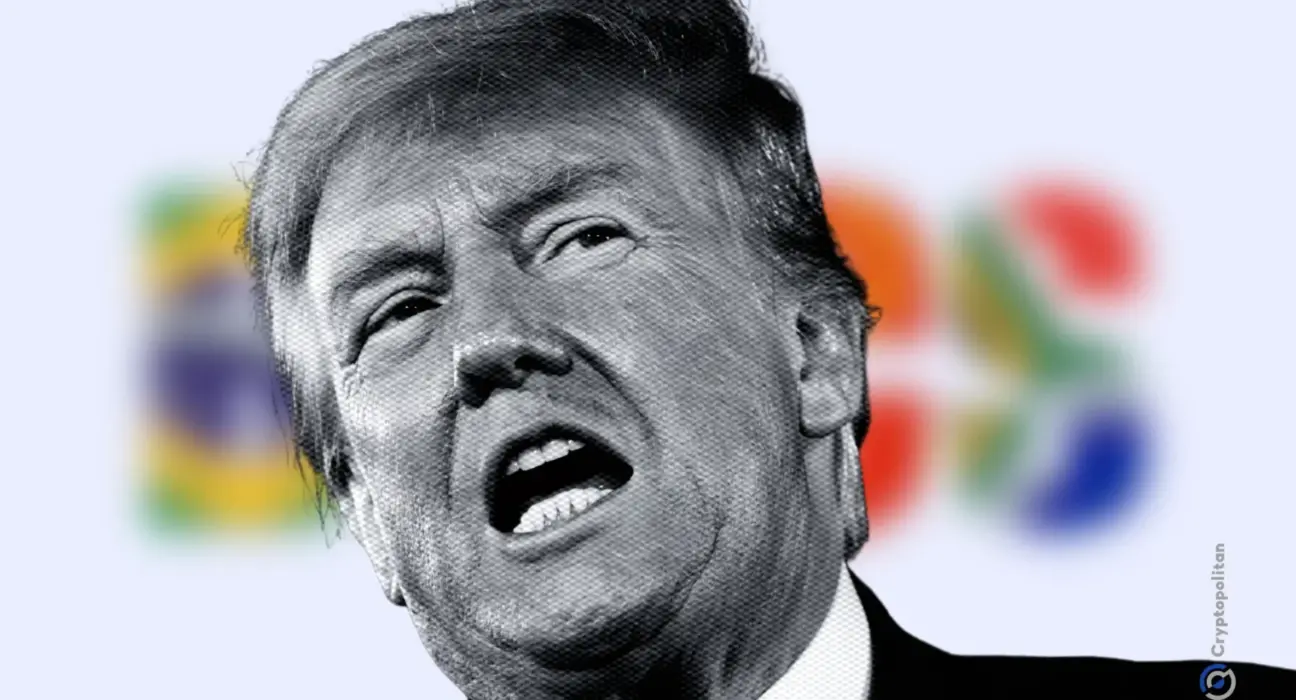In this post:
- Trump wants to slap a 100% tariff on any country that drops the US dollar for trade.
- This could cause massive price hikes for imported goods and lead to inflation in the US.
- BRICS nations China and Russia might speed up efforts to move away from the dollar.
At a campaign rally in Wisconsin, former president Donald Trump announced that any country daring to ditch the US Dollar for trade would face a 100% tariff on their goods.
In his opinion, the dollar has been “under major siege” for the past eight years. He’s looking to stop the de-dollarization movement, which has been gathering steam with countries all over the world thanks to the BRICS.
Though the dollar’s dominance has slipped in recent years, it still makes up 59% of official foreign-exchange reserves, according to the IMF. And Trump, being Trump, isn’t ready to let that number drop further.
Now Wisconsin, the state where Trump made his speech, is a key battleground in the fight for the Oval between him and Kamala Harris, who is currently leading by 8 points in a Bloomberg/Morning Consult poll.
Global trade and economic fallout
A 100% tariff is no small matter. If Trump makes good on his pledge, the cost of goods imported from countries moving away from the dollar will shoot through the roof.
This means higher prices for US consumers and businesses relying on foreign products. Picture this: your $800 smartphone could suddenly cost $1,500.
Studies predict that these tariffs could push inflation up by around 0.75 percentage points, weakening the economy even further.
Retaliatory tariffs could also be on the horizon. Countries facing these 100% tariffs aren’t going to sit quietly. They might slap tariffs of their own on US exports, creating a full-blown trade war.
History shows us how bad this can get—just look at the US-China trade battle a few years back. Exports took a dive, and the US economy suffered.
According to the Tax Foundation, retaliatory tariffs could shrink US GDP by 0.05% and wipe out around 27,000 jobs.
Impact on the US dollar and global trade relations
The longer-term damage might be to the dollar itself. By pushing countries away from trading in the US currency, Trump’s tariffs could backfire, speeding up the de-dollarization trend.
Countries tired of dealing with punitive measures like that might finally decide to drop the dollar entirely, leaving its reserve currency status hanging by a thread. The tariffs would also mean a sharp decline in trade volumes. Let’s look at the numbers.
The US traded $254.4 billion with China in 2023, $100.4 billion with India, $58.3 billion with Brazil, $48.2 billion with Russia, and $21.4 billion with South Africa. A 100% tariff could bring these numbers crashing down as both sides pull back.
Back home, Trump’s plan could hurt American businesses as much as foreign ones.
Companies that depend on imported materials or parts from de-dollarizing countries would face higher costs, driving up production expenses.
This could mean less productivity, higher prices for consumers, and, in the worst-case scenario, layoffs. Economic researchers estimate that tariffs of this scale could chop long-term GDP growth by 0.2% to 0.8%.
Even crazier is that they won’t hit everyone equally. Lower-income households would feel the pain the most.
A study shows that even a 10% tariff can squeeze the budgets of poorer families, costing them a bigger chunk of their income compared to wealthier households.
Now imagine what a 100% tariff would do. The gap between rich and poor could widen even further.
Retaliation from BRICS?
The BRICS nations are likely already preparing their counter moves. In response to Trump’s 100% tariff threat, these countries could speed up efforts to create their own financial systems, finally bypassing the US dollar entirely.
China, for instance, has been pushing its digital yuan in global trade, while Russia has been trading oil in rubles instead of dollars. Brazil and India have been exploring the use of their local currencies for international deals.
The BRICS countries might also step up their internal cooperation, building stronger trade ties with each other and with other nations outside the US’s influence.
New alliances could form, with countries looking to sidestep US tariffs and trade in their own currencies. They already have. Countries like the UAE, Iran, and even NATO’s own Turkey have shown an economic preference for the BRICS.







